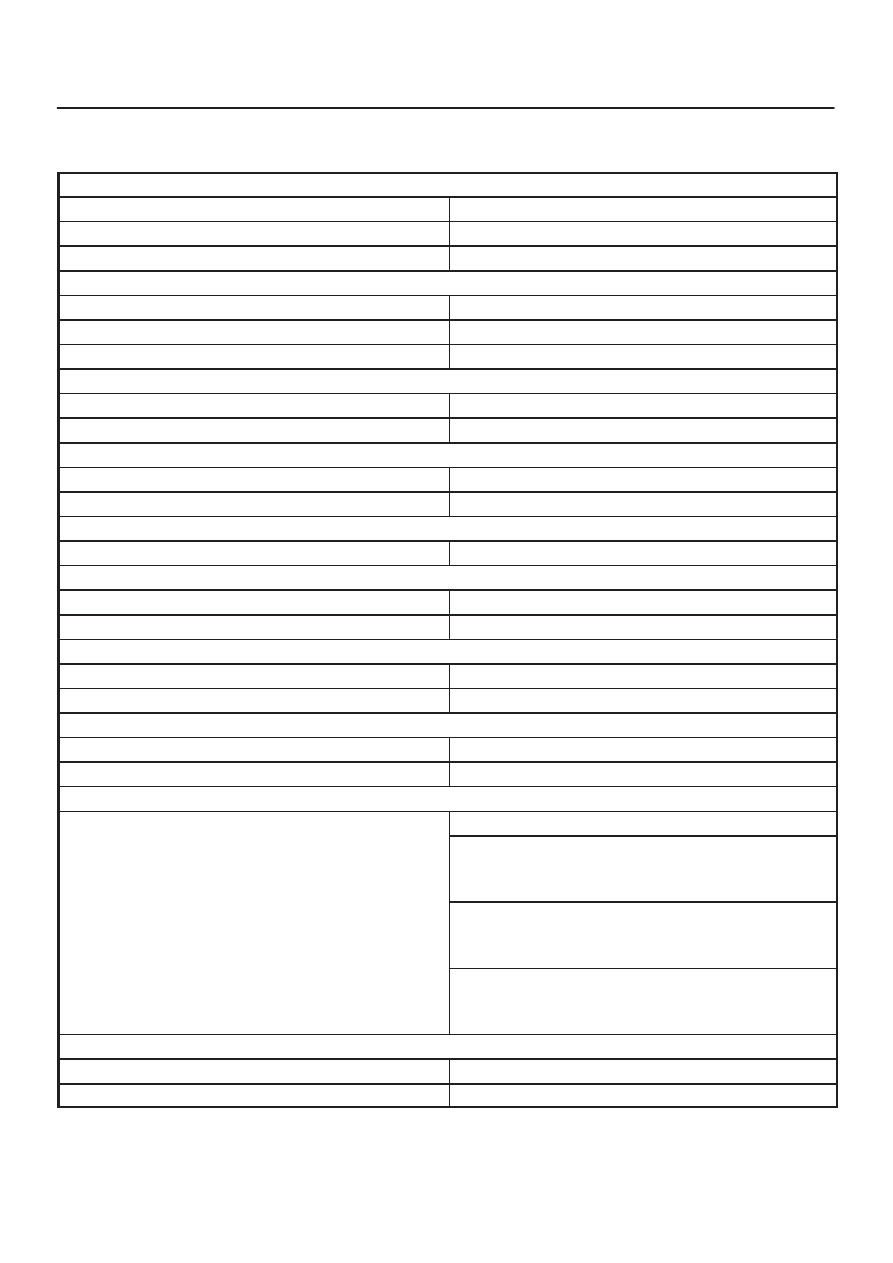Isuzu Amigo / Axiom / Trooper / Rodeo / VehiCross. Manual - part 20

HEATING, VENTILATION AND AIR CONDITIONING (HVAC) 1A–51
Main Data And Specifications
General Specifications
Heater Unit
Temperature control
Reheat air mix system
Capacity
4.3 kw (3700 Kcal./hr.)
Air flow
280 m
#
/h
HEATER CORE
Type
Plate and corrugate fin
Element dimension
167 mm (6.6 in.)
×
151 mm (5.9 in.)
×
35 mm (1.4 in.)
Radiating area
Approx. 2.4 m
@
EVAPORATOR ASSEMBLY
Capacity
4.8 kw (4100 Kcal./hr.)
Air flow
430 m
#
/hr
EVAPORATOR CORE
Type
Al-laminate louver fin type
Element dimension
235 mm (9.3 in.)
×
224 mm (8.8 in.)
×
60 mm (2.4 in.)
EXPANSION VALVE
Type
Internal pressure equalizer type
CONDENSER
Type
Parallel flow type
Radiation performance
14.8 kw (12,700 Kcal./hr.)
CONDENSER FAN
Air flow
850 m
3
/h
Fan size
f
261
RECEIVER/DRIER
Type
Assembly includes triple pressure switch
Internal volume
300 cc (10 fl.oz.)
PRESSURE SWITCH
Type
Triple pressure switch
Low pressure control
ON: 206.0
±
30.0 kPa (29.8
±
4.3 psi)
OFF: 176.5
±
19.6 kPa (25.6
±
2.8 psi)
Medium pressure control
ON: 1471.0
±
98.1 kPa (213.3
±
14.2 psi)
OFF: 1078.7
±
117.7 kPa (156.4
±
17.7 psi)
High pressure control
ON: 2353.6
±
196.1 kPa (341.3
±
28.4 psi)
OFF: 2942.0
±
196.1 kPa (426.6
±
28.4 psi)
REFRIGERANT
Type
HFC-134a
Specified amount
700 g (1.54 lbs.)